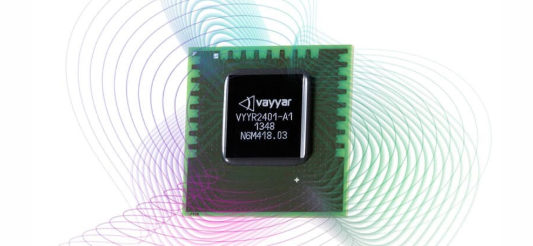Four Up-and-Coming Semiconductor Start-ups are Sparking Innovation – News

The semiconductor industry is dominated by big names that engineers know and trust, like Silicon Labs, Analog Devices, and Texas Instruments. These companies have invested billions in research and have spent years perfecting manufacturing equipment, giving them an edge on less-established semiconductor companies.
However, there are plenty of small silicon start-up companies hoping to change the direction of engineering designs.
These start-up companies often have semiconductor foundries that produce their devices for them, essentially outsourcing the production stage. This may open time and resources for more innovative ASICs and custom ICs. As an example, Arm leases its core design to other designers who then design the whole chip.
In this article, we will take a look at a few semiconductor startups and discuss their promise in the silicon industry.
Vayyar has developed a 4D imaging sensor designed to provide state-of-the-art radio imaging while also tackling current privacy concerns.
Vayyar sensor. Image used courtesy of Vayyar
The sensor operates on the 3 GHz to 81 GHz range and incorporates up to 72 transceivers. This allows the sensor to potentially see behind walls, screen for potential breast cancer, detect obstacles, monitor chemical composition of mixtures, and test in assembly lines.
This sensor has been incorporated into a number of products around the industry, particularly the automotive industry. It is also used in the Walabot 3D imaging sensor.
VYYR2401-A3 chip included in Walabot 3D hardware. Image used courtesy of Walabot
The company has seen multiple awards and recognition, including CES Best Tech, T3 innovation award, and the Fast Company’s “Worlds Most Innovative Companies.” With larger companies incorporating Vayyar sensors into their products, it’s possible that Vayyar may become an valuable player in the semiconductor sensor market.
Founded in 2019, NUVIA set its sights on reimaging silicon design for high-performance computing environments. NUVIA claims their products will create silicon devices that combine the advantages of computing performance, power efficiency, and scalability.
While the company has raised $53 million and has gained interest in some big names, including Dell Technologies, NUVIA has not yet revealed any products in the works—a common characteristic of many silicon companies.
Considering that Dell Technologies has invested in NUVIA, we can make some deductions as to what they will be planning to produce.
NUVIA could instead be involved with producing edge-computing devices for smartphones and IoT products that require power efficiency while requiring computational power.
In addition, the three founders of the company, Gerard Williams III, John Bruno, and Manu Gulati, have a background in mobile chip design and have insinuated that a custom core is in the works.
Specifically, CEO Gerard Williams III was a senior director at Apple; SVP of Silicon Engineering Manu Gulati was the lead SoC architect for consumer hardware at Google; and SVP of System Engineering John Bruno (right) was a system architect at Google.
CEO Gerard Williams III (left), Manu Gulati (middle), and John Bruno (right). Image used courtesy of NUVIA
Should NUVIA enter this market, they will face strong competition from other SoC producers (such as Qualcomm) known for low-energy, high-performance mobile and IoT devices.
When it comes to energy consumption, the IoT sector is arguably the most demanding market; designers want radio communications in devices that consume as little power as possible.
As a result, there are many large semiconductor companies racing to produce low-energy SoCs, such as Silicon Labs, Qualcomm, and Nordic Semiconductor.
But one company that stood out at CES 2020 was Atmosic, which was named “Best of Innovation Honoree.” Atmosic, a silicon start-up, has developed a Bluetooth SoC specifically aimed at extremely low energy environments.
Atmosic recognizes that many IoT devices only transmit small amounts of data infrequently. Combining an energy management unit into the SoC allows for efficient energy conversion.
ATM3201/ATM3221 architecture. Image used courtesy of Atmosic
Atmosic claims that their latest device has achieved up to 100 times lower power than standard Bluetooth products. While their M2 series is aimed to work with a battery, the M3 series can be used in energy harvesting applications requiring no battery to operate.
Currently, it appears that there are few products that incorporate the M2 or M3, but the demo of a wireless keyboard with no internal batteries (powered via RF energy harvesting) indicates promise that Atmosic may become a notable player in the low-energy IoT field.
Weebit Nano
Weebit Nano is a start-up company that is developing a new memory technology, called Resistive Random-Access-Memory (ReRAM), which is non-volatile like FLASH, but 1,000 times faster and with 1,000 times lower power.
Other advantages of ReRAM is that it can be made denser (with FLASH having problems below the 28 nm feature), more durable, and better fabricated from fab-friendly materials.
If used, ReRAM could help to dramatically speed up devices acting as a persistent memory between permanently stored data on a magnetic disk and the main RAM for data centers, IoT devices, and PCs.
Diagram of Weebit’s ReRAM cell. Image used courtesy of Weebit Nano
While Weebit Nano is yet to implement their design into any products, the company has recently announced that they are moving toward commercialization ahead of schedule. If achieved, it’s possible that Weebit Nano may make a name for itself in silicon memory.
Since the semiconductor field has been established for a long time, it can be exceptionally difficult for start-ups to get their names out there and compete with the big companies.
However, it appears that many start-ups are often funded by larger companies who may use the expertise of a small team to develop an idea that the larger company can put into full production.
Startups have a valuable place in the semiconductor industry, if but for their ability to develop innovative concepts and designs on a small scale. What startups have you kept your eye on? Share any up-and-comers your peers should be aware of in the comments below.
